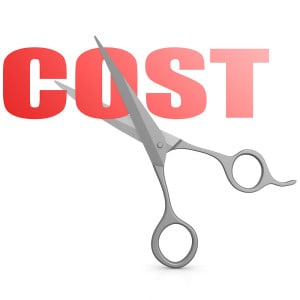What are the easiest tips for cutting spending habits?
 Whether you’re interested in cutting spending habits to save up for a special purchase or to adjust your expenses after downsizing jobs, it’s easier than you might expect. Chances are, you’re mentally preparing for a life of sacrifice. Here’s some good news for you: things don’t have to be so bleak. A few mostly painless adjustments will help you change your habits and greatly lower your everyday costs.
Whether you’re interested in cutting spending habits to save up for a special purchase or to adjust your expenses after downsizing jobs, it’s easier than you might expect. Chances are, you’re mentally preparing for a life of sacrifice. Here’s some good news for you: things don’t have to be so bleak. A few mostly painless adjustments will help you change your habits and greatly lower your everyday costs.
Want to cut your spending?
Follow these easy steps:
1. Cut your spending by automating your budget.
Before you begin any trimming at all, consider putting your essentials on autopilot. This safeguards the important things – rent, utilities, insurance – and completely removes them from the pool of negotiable expenses. Your brain on a sale high, for instance, may try to convince you that rent can always wait another week for the sake of a brand new big screen at bargain basement prices. Your landlord won’t agree, and neither will you when the rest of your belongings are out on the street, so accept a certain amount of essential costs and automate payments through your credit card or bank.
2. Create a bank buffer so you’ll cut your costs.
The brain of the website MoneyUnder30 has an easy, stress-free method for revolutionizing your personal finances. It works for anyone regardless of age, and it doesn’t take long to establish. After automating your essential bills – the things you truly cannot live without – take a look at minimizing your extra expenses. Really restrict yourself on additional spending until there’s an extra $500 to $1000 in your checking account.
You build this fund before doing anything else – putting aside emergency savings or paying off debts. Why? Because a buffer prevents you from living paycheck-to-paycheck. Just the fact that the buffer fund exists leads to a major mental switch, and – in a practical way – it prevents small problems (forgotten payments) from turning into big ones (bounced checks).
3. Start your emergency savings fund so you can save tomorrow, too.
Ideally, one day you’ll have at least six months’ worth of living expenses holed away in a savings account just in case you lose your job. You treat this similarly to your bank buffer. Build it even if you have balances on credit cards. No one plans to get fired, but that’s not the only situation where you might end up without work.
Accidents happen. How many weeks would it take for workman’s comp to kick in? Would you even be eligible? It helps to have a savings goal in mind and a timetable for when you want to reach it. Two years? Five years? Set reasonable milestones, and then automatically have the amount you need to reach it removed from your banking account every month. Making this goal a priority will help you avoid wasting money frivolously.
4. Assessing your normal spending can help you cut costs.
Plenty of today’s experts say making a budget is less a matter of detail and more a challenge of breaking old habits. Still, you need to know where your money is going. Cash is more difficult to track so putting everything on a credit or debit card can help you automate this process. However, a pen and paper work just as well if you can remember to write everything down.
Once you have your information, you can either copy or port it directly into an online account like Mint.com that tracks your expenditures and organizes them into like groups, making it very easy to see where the majority of your money is going. Investigate any bloated areas of your budget for potential cutbacks.
If you’re working on cutting spending habits, an auto pawn could help. Work on safeguarding your finances against emergencies while you cover your current bills.
Call your nearest Title Tree location for help now.
